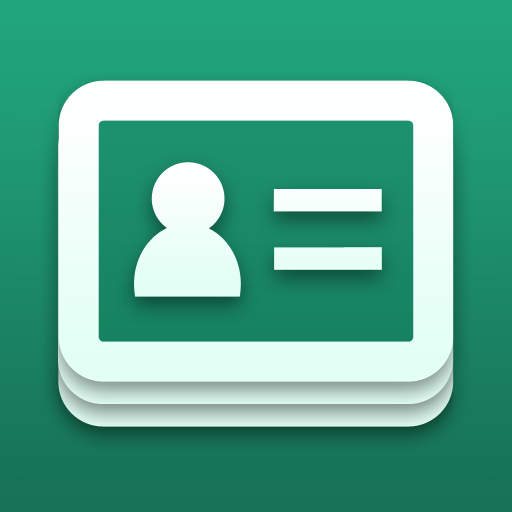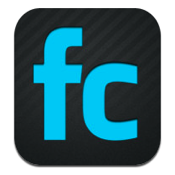It was only a matter of time that one of business most basic tool finally entered the digital technology age. Online websites and mobile applications are ushering a new era for the modern day business card that is no longer limited to a paper form that needs to be handed to an individual to circulate or forgotten in a junk drawer. These applications neatly organize your business cards into digital folder that can be accessed with a few taps on the screen.. Business owners and Entrepreneurs now have the tools to create their own business card without being subjected to the requirements of card design companies and the ability to share them with ease. These cards also have an edge over the modern day cards since they are interactive and allow you to connect with the company or individual with a click of the button.
Mobile business card applications fall into two categories: Those that let scan business cards into digital formats to access from an online rolodex, and those that let you create and share contact information in a professional format wirelessly. After testing of several of the top application, only two stood header and shoulders above the rest in these categories.
YCard-Card Reader
Ycard is the most accurate business card reader currently on the iTunes market. The company’s motto is “if your name card is not scanning in 100% accurate then it’s not just good enough” and after several comparisons it’s hard to dispute. Of all the card readers tested this was the only one that with near perfection was able detect and input every category. The beauty of Ycard is actually in its simplicity, as it broken into five easy to navigate sections; the camera scanner, the rolodex, cards waiting to be uploaded, card exchange, and settings.
Seven different business cards with unique styles and designs were scanned in. YCard was able to detect and differentiate between names of the companies, individual’s names, landlines, faxes, emails, addresses, websites, and then inputted additional information and contacts into the notes section. YCard took the scanned information including the photo of the card and uploaded it into its cloud system and then into the application rolodex section. From there it allowed us to create sub groups or categories to add the new contacts. Another great feature is that the application gave us a choice to add them into their phone contacts or leave them in rolodex. Even without adding them into your personal contacts, from the rolodex the user can contact the business/individual and get map directions by tapping the information. Ycard easily allows you to input or upload your own information and to exchange it with other users.
Of course no application came be without some short comings and YCard has a few. The things that make YCard the best application on the market are also its biggest problems. Though its beauty is its simplicity, some users may find the layout a bit too bland compared to other card reader designs. With it’s close to 100% you swear there is someone on the other end inputting the information and that feels like the case. It can take anywhere from an hour to twenty fours for YCard to upload your contacts so it’s best to scan them in as soon as you can. Another issue with YCard is that it does not allow user to add their new contacts into their LinkedIn account and thatis due to the fact that YCard has a sister application called YConnect that appears to be a LinkedIn competitor.
If you can over look those few hiccups then YCard should be the card reader of choice for anyone looking for the best accuracy and easy to navigate application.
(YCard-Card Reader is available in the ITunes app store and soon to be released for Android)
MY FACECARD
Is the standard that other digital custom business card applications will be emulating for years to come. My Facecard allows users to create unique digital cards that can be shared wirelessly with other users or emailed to non users.
Most contact sharing applications have done away with business card look to focus more on information and putting into the gadgets contact list. Many individuals still prefer the old fashion and creative business cards, and My Facecard has given users the power to easily create a top of the line card. One of the First things that set the card apart from all others is the interactive contact and social media icons. When a user first inputs their information they are given a chance to add their Google+, twitter, Facebook, tumblr, blogger, LinkedIn, and chain linked icon which they can assign to any other social media site or personal website. These interactive buttons as well as three other for email, sms, and call, appear on the card and can be repositioned to the users liking. My Facecard allows users to choose from a few background templates but it really doesn’t need to. What makes My Facecard a dream for users is the fact that you can custom the background with any design or photo you would like. Users are only limited by their imagination and Photoshop abilities when it comes to the two sided card. My Facecard allows for font customization with 30 colors to choose from, 10 different font styles, and changeable font size.
My Facecard allows users to share their cards with each other by wireless phone “bumping” that become stored in an applications rolodex. A user can then access the cards from the rolodex and tap the interactive icons to take them to the social media sites or contact the business/individual. If that wasn’t already impressive enough, if and user decides to update their card, the card will automatically update in the rolodex of users they have shared the card with.
If My Facecard had anything for users to complain about, it would that it doesn’t recognize Facebook like pages. That is a Facebook issue that many IOS applications are having trouble with.
(Currently only available in the ITunes app store)
YCard and My Facecard apps are currently FREE











